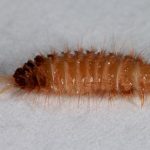Atelier Algæm manufacturing, technical sheet.
Traditional made shamanic drums do not require special maintenance, but rather certain small precautions or rules of use, to have a better sound and conservation.
1. Oil protection
Made at the end of the workshop and possibly to be redone every 2 years.
Once the skin of the drum has dried well in dry weather, the drum will need to be completely treated with a brush of olive oil.
This oil treatment will keep the skin supple, nourish the wood of the circle, as well as preserve the leather and the whole from drying out and humidity.
The whitewash is done to refusal, that is to say until saturation, as much on the wood of the circle as on the skin. .
After this full brushing and a certain penetration time of 24 to 48 hours, the excess oil will be gently wiped off with a clean cloth.
The oily appearance of the drum will be dissipated fairly quickly, count around 3 days to regain comfortable use of the drum.
This treatment can possibly be repeated if the skin seems dry after a few years.
2. Hygrometric variation and skin tensions
The skin of the drum is a natural and living material, the variations in the humidity of the air linked to the climate and the environment directly impact the tension of the drum, by expansion in wet weather, and on the contrary by tightening linked to the dryness of the ambient air. This voltage variation directly impacts the frequency of the sound,
– Deeper sound, even ineffective when relaxed by humidity.
– more high-pitched acute or flashy when the skin is too tight from dry air or dryness.
In extreme humidity with completely relaxed and soggyskin the drum can become unusable, this can happen especially for rituals or concerts outdoors.
Conversely, a top dry environment will give a flashy sound without depth.
2.1 Adjust the skin for playing
2.1.1 Retighten the skin
 When the drum does not have a pneumatic adjustment or tuning device.
When the drum does not have a pneumatic adjustment or tuning device.
If the drum has been wet, the way to find a good sound is very simple. This involves drying the skin of the drum for a few minutes using a heat source. To this end the sun is king. Then we better understand the essential presence of a fire that we often find at meetings of drum circles or various festival concerts and outdoor rituals.
If the sun or the fire does not exist, for example inside a humid house, any source of heat can be used: fires or hot plate of a stove, convector etc.
Video: tightening, drying a shamanic drum at home .
< ! > Be careful to always keep the drum at a good distance from the heat source so as not to burn it. The heat perceived by your hands holding the drum will be the best indicator to moderate heat exposure.
2.1.2 Relax it
To relax excessively dry skin, it suffices to moisten the skin with water evenly over the entire external surface of the drum skin.
2.2 Ritualization
The manipulations of “regulation” of the tension and the sound, either by water or by fire are moreover frequently ritualized, in opening of shamanic circle or in certain Mongolian or Amerindian musical representations.
3. Where to place my drum
3.1 Outdoors
Generally the drums are stored in their protect cover bag, it will be rainproof if possible.
Outdoors, this cover will allow the drum to not be subjected to variations due to humidity or drought, so it will always be ready to play properly. Avoid placing your drum for too long under a blazing sun and especially never forget it in a car overheated by the sun.
3.2 Indoors
Often, for matters of ornament, or to experience the drum fully, as a companion or spiritual support, the drums are displayed without any protection, placed somewhere or hung on a wall. The rule will then be, as for all acoustic wooden instruments, not to place it
– in a room or against a damp wall,
– neither in a place that is too sunny,
– or too dry or near a strong source of heat.
4. How to play
The drum can be played with a padded mallet, or for finer sounds with the hands and fingers.
It is not normally played with a wooden stick or any other object that could scratch the skin.
Also note that certain ways of playing can generate sounds:
– disruptive
– or on the contrary beneficial,
– or influence your heart rate or breathing
For example by typing too hard in the center of the drum. It’s up to you to modulate the vibrations according to the places on the surface of the skin where you play.
5. Insect protection
 Some insects such as the so-called “museum” moths, such as the nymphs of the Anthren moth and especially the Anthrenus Verbasci (Trogoderma Variabile) which are real carnivores liable to attack your drum in certain seasons. Some of these insects wreak havoc in ethnological museums, devouring everything organic, and particularly of animal origin such as parchment books, etc.
Some insects such as the so-called “museum” moths, such as the nymphs of the Anthren moth and especially the Anthrenus Verbasci (Trogoderma Variabile) which are real carnivores liable to attack your drum in certain seasons. Some of these insects wreak havoc in ethnological museums, devouring everything organic, and particularly of animal origin such as parchment books, etc.
Fortunately my drums are usually made of a cedarwood hoop. However, cedar has the great advantage of repelling these insects. If, however, your drum is affected, the most effective solution will be to use a few drops of cedarwood essential oil.
A few drops sprayed either on the fur of your drum (if it has any), or on the wooden hoop inside it. Be careful, however, not to overdo it so as not to stain the skin on the drum’s use surface. Another commonly used solution is to use one or two cedar wood rings, which have received a few drops of this oil and placed somewhere on the fur or wood of the drum.
6.My drum makes a cracking noise, Spirit Wood
It sometimes happens but quite rarely, generally with variations in temperature or humidity, that a sharp cracking noise from the drum. Or sometimes even for no apparent reason.
Apart from the manifestation of the Spirit that you have breathed into your drum, the drums of the Algæm workshop are made exclusively with Natural materials, these are by nature sensitive to various variations, and remain alive in a certain way.
7. Other questions
In case of doubt or for other questions, or for a repair in return to Algaem workshop, do not hesitate to contact me.
